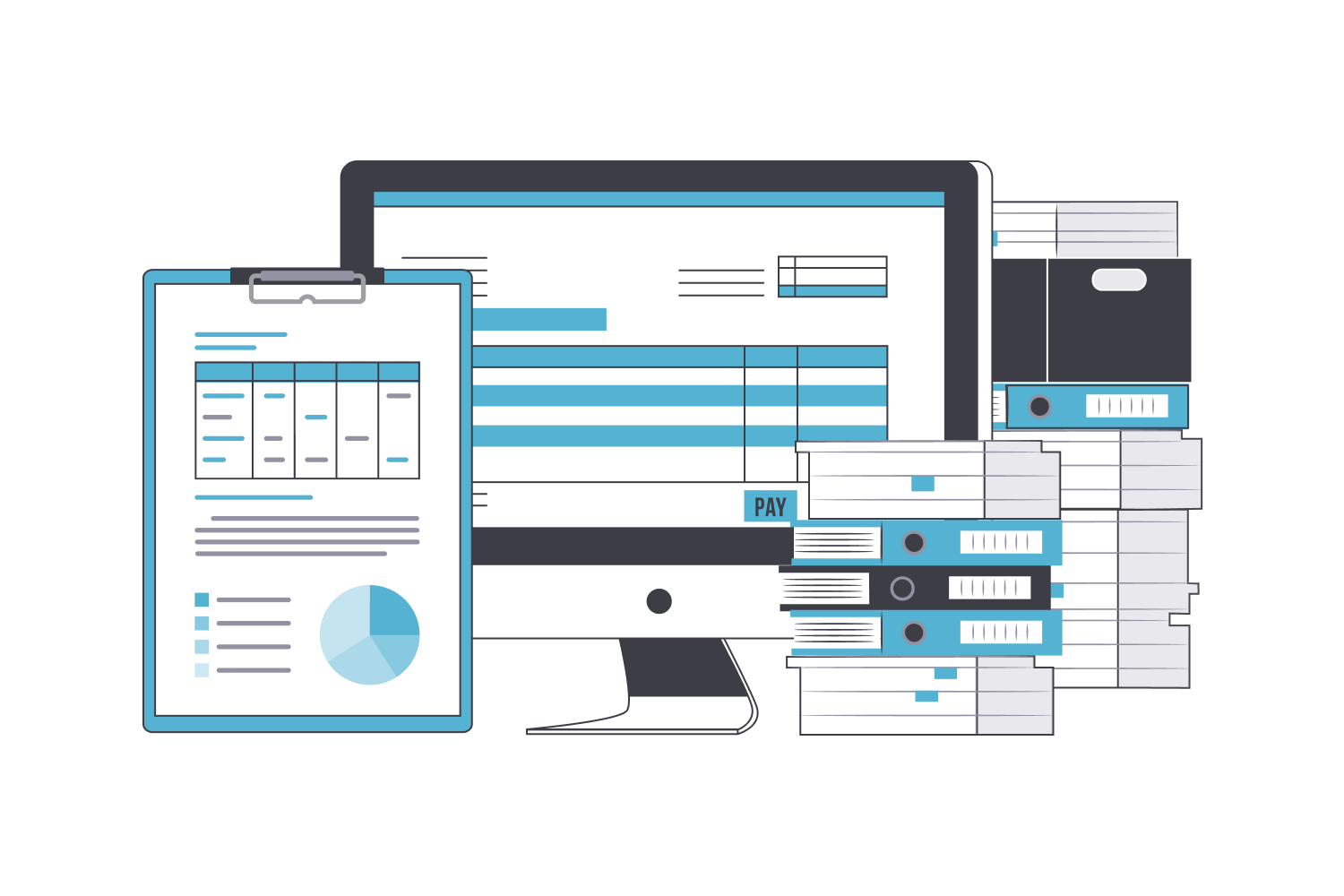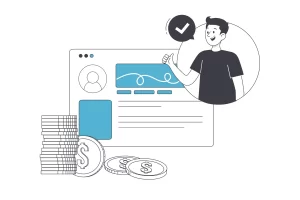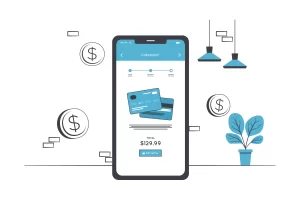Ever get that sinking feeling when your bank account balance and your clinic’s financial records just don’t seem to agree? It’s like your money has vanished into thin air!
Payment reconciliation can certainly be a frustrating puzzle, especially when done without the right strategy and tools.
If your current process is time-consuming and prone to human error, it’s time to make a change.
In the following blog, we’ll give a detailed overview of payment reconciliation and some of the key ways to make it simple — so stick around to see how you can set up a no-fuss and optimized reconciliation process.
This blog will cover:
- A breakdown of the payment reconciliation process
- The types of payment reconciliation
- Seven best practices for effective reconciliation
Let’s turn those financial discrepancies into a thing of the past!
What is payment reconciliation?
Alright, we can’t go in-depth without knowing what we’re dealing with first, can we?
In short, payment reconciliation is an accounting process where you compare what’s in your company’s internal financial records to other records, such as bank statements or credit card statements.
Think of it as double-checking to ensure everyone is on the same page about the money coming in and going out of your business.
Payment reconciliation is essential for the following reasons:
- Lowers risk of errors
- Fraud detection
- Ensuring accurate financial reporting
- Avoiding billing disputes and miscommunications
- Staying compliant with regulatory requirements
How does the payment reconciliation process work?
Now that we understand what payment reconciliation is, let’s talk about how it works.
This is often a lengthy process, involving a lot of steps and tiny details that need to be taken care of. To keep it manageable, we’ll break it down into six main elements.
Gather records
To get our financial records in order we need to collect them. So, our first step is to gather all the necessary documents for comparison.
You’ll need two main types of records:
- Internal records: These include financial transactions, financial statements, invoices, etc. These could be stored in your accounting system or even a spreadsheet.
- External records: These are bank records or other reports from payment processors that you’ll need to compare against your internal records.
Make sure you get everything, even those records you might keep by hand or stashed away in an Excel sheet. They might be easy to overlook, but forgetting about them can cause major headaches later on.
When you’re finished with this step, you should have a collection of invoices, sales reports, transaction logs, bank statements, payment processor reports, and additional relevant documents.
Match transactions
Now it’s time for the side-by-side comparison.
To reconcile transactions, the internal and external financial data needs to be matched up.
For example, you might need to match a client’s payment record for a procedure recorded in your payment software with the corresponding deposit on their bank statement.
This process needs to be done for each and every transaction. Yes, all of them!
It might seem like a lot (and it can be if you’re doing manual reconciliation), but there are ways to streamline this, which we’ll cover later on.
Identify discrepancies
Say you’re comparing records and you spot a transaction that’s completely different
During the matching process, various discrepancies like this one might pop up. While you hope not to find any, it’s always good when you do, since identifying mismatches is a crucial part of payment reconciliation.
You may find transactions missing from one set of records, different amounts showing up, or there could be timing differences. Other discrepancies could be due to simple errors, miscommunication with vendors, or unfortunately, more serious issues.
The key is to document all these mismatches and move on to figuring things out.
Investigate and resolve
Once you have all those differences neatly documented, it’s time to play detective and resolve them.
Finding the cause of a discrepancy might be as simple as realizing a staff member forgot to mark an invoice as paid. That’s OK, it happens to the best of us.
But the issue could also be on the bank’s side. Maybe they introduced a new fee you weren’t aware of, or there was an accidental duplicate charge.
If the problems stem from your end, you’ll need to carefully determine if it’s a simple data entry error, a software misconfiguration, or something more concerning that might suggest either external or internal payment fraud.
Finalize
Whatever the causes, the goal is to resolve any record discrepancies efficiently.
This is important, because unresolved issues can throw off your financial reporting and cause all kinds of issues with government regulating bodies in the future.
Once everything is sorted out, you can’t just call it a day! Yes, that’s right – in the finalization stage, you need to double-check everything again.
It’s crucial in finalizing the payment reconciliation process that the adjusted balance sheet in your internal records and other records match exactly. After all, everything should be perfectly aligned now.
Document and review
Once everything is checked, resolved, and double-checked, we arrive at the last step: documenting the reconciliation process.
This involves recording the specific discrepancies you discovered, what caused them, and how they were fixed. It’s important to document this carefully for future reference.
Regularly reviewing this documentation is also a good practice. This helps ensure the process is accurate and efficient, and it lets you spot any potential patterns of errors that might need addressing to strengthen internal financial controls.
And with that, the payment reconciliation process is finished.
Types of payment reconciliation
Now that we understand the basic process of payment reconciliation, let’s explore the different types you might encounter.
Depending on the size and complexity of your business, you may need to perform several of these on a regular basis.
- Bank Reconciliation: The most common type which involves matching transactions in internal records with bank statements.
- Credit Card Reconciliation: Similar to bank reconciliation, but specifically focused on credit card transactions and statements.
- Merchant Reconciliation: This is common if you work with multiple payment processors. It involves comparing your internal records with the reports provided by each processor.
- Accounts Receivable Reconciliation: This ensures that your records of outstanding invoices match what your customers owe.
Accounts Payable Reconciliation: This focuses on verifying that your records of bills and payments due align with what your vendors and suppliers have on file.
Best practices for payment reconciliation
No matter the type of reconciliation you’re doing, there are some universal best practices that will make the whole process smoother.
Maybe you’re a solo practitioner and you want to make this process easier for yourself. Or you might be a newer clinic owner facing payment reconciliation for the first time and figuring things out as you go.
Whatever the case, following these guidelines helps ensure your records are accurate, your finances stay healthy, and you avoid unpleasant – and completely avoidable – surprises.
Let’s cover seven of the most important practices.
1. Establish a clear and documented process
Remember those steps we outlined at the start? Those weren’t just for show!
A crucial best practice is to clearly define the steps involved in reconciliation. This includes defining who is responsible for each step (for example, one person enters the bank statement data, another reviews the matches, and so on), how often reconciliation is done, and which tools you’ll be using.
Once you’ve got this defined, document it thoroughly and make sure the owner and practice manager are well-informed. This ensures everyone’s on the same page and keeps the process organized from start to finish.
2. Automate as much as possible
We mentioned that reconciliation can be a long process. That’s why it’s essential to utilize software tools for automated reconciliation that streamline data entry, matching, and flagging discrepancies.
These automations could make use of existing features within your accounting or practice management software to help you work more efficiently or you might get some more specialized reconciliation solutions if you deal with a larger volume of transactions.
Less time spent on manual processes means you get a lot more time for important decision-making and focusing on other important aspects of your clinic like patient satisfaction.
3. Standardize data formats
One practice that can help both you and any accounting software solutions you use is standardizing all data formats when recording transactions.
Imagine trying to match transactions when there’s a difference in how your bank formats their dates compared to how you do it. A simple search in a piece of software now becomes a tedious process. If this date and time data was standardized by, say, the ISO 8601 format of YYYY/MM/DD the problem could have been avoided.
Consistent data greatly simplifies matching and saves you the frustration from these tiny or not-so-tiny formatting differences.
So consider using:
- Standardized date and currency formats
- Consistent transaction categories or descriptions
- A clear invoice and statement numbering system
4. Segregate duties
Payment reconciliation involves a lot of work, especially the more cash flow a business gets.
Giving all of this work to one person is a bad idea – it’s overwhelming and more prone to mistakes. Plus it can open up opportunities for fraud if one person has control over everything.
On the other hand, having everyone in your team involved in every step without any internal controls can also be a mess, leading to repeated work and an inefficient process.
The solution? Divide and conquer! Separate tasks like transaction processing, reconciliation, and approval and delegate them to different staff members.
This creates an extra layer of control and ensures everyone involved is accountable for their piece of the puzzle.
5. Conduct regular reviews
Remember, payment reconciliation isn’t a once-a-year thing.
If you have a steady flow of transactions, waiting until they pile up is a recipe for trouble. The more records you have to deal with at once, the harder it is to spot those pesky discrepancies, and the more likely a hidden issue goes unnoticed.
So do reconciliations frequently, ideally daily or weekly, depending on your transaction volume.
Consistent reviews help you catch and address problems quickly, preventing them from snowballing into bigger problems in the future.
6. Maintain clear and accurate records
Anyone who’s ever dealt with messy, disorganized reports knows the pure frustration it can cause.
So, do yourself a favor and keep your own records clear, accurate, and well-organized.
Along with using standardized data, this also means having detailed and organized records for transactions, invoices, receipts, and past reconciliation reports.
Not only will this make your life easier when matching records with the bank, but these detailed documents are also crucial if you ever need to go back and review something, or for audits – either internal ones or those required by regulatory bodies.
7. Invest in employee training
Finally, even with the best process and all the right tools, the payment reconciliation process will always fall short if your staff aren’t equipped to handle it.
So invest in training for your employees who are involved in the reconciliation process.
They need to understand the steps involved, how to spot and resolve discrepancies effectively, and their specific responsibilities within the process.
This ensures a smooth workflow with fewer roadblocks along the way.
What is the most effective tool for payment reconciliation?
There are various tools designed for payment reconciliation, but integrated payment processing systems are the most effective.
Among other things, these systems automate data entry and centralize all of your payment records, making reconciliation much faster and less error-prone.
Our own tool, Pabau, is a practice management software with built-in payment processing capabilities and powerful integrations with tools like Stripe, GoCardless, and Xero.
You can take payments directly within Pabau, with options like paying invoices online and Pabau Pay card terminals that support payment methods like Google and Apple Pay, and major credit and debit cards. All different payments are in one place, reducing the need for manual invoice clean-up or specialized accounting software — making this process straightforward and efficient.
These payments are automatically stored within the software and you can generate detailed reports at any time. The reports have all the necessary details like dates, invoice numbers, payment types, etc. for easy reconciliation comparisons.
Pabau also includes healthcare-specific features like insurance remittance that allow you to add bulk insurance payments and then match them against invoices, ensuring no payment gets missed during reconciliation.
Enhance your payment reconciliation efficiency with Pabau
Alright, that was a lot to take in!
We’ve covered the ins and outs of payment reconciliation, the different stages involved, and valuable best practices to streamline the process.
As you’ve seen, having accurate records and organized data is key to efficient reconciliation.
That’s where Pabau can help.
With payment information securely stored and accessible in our system, you can easily compare transactions and ensure that records match.
Working hand in hand with Pabau Pay card terminals, Pabau users can minimize manual errors from manually syncing transactions between their payment terminal and clinic software.
All of these features can make payment reconciliation a less time-consuming and more accurate process.
What are you waiting for? Explore our payment terminals and learn more about how Pabau can transform payment reconciliation.




